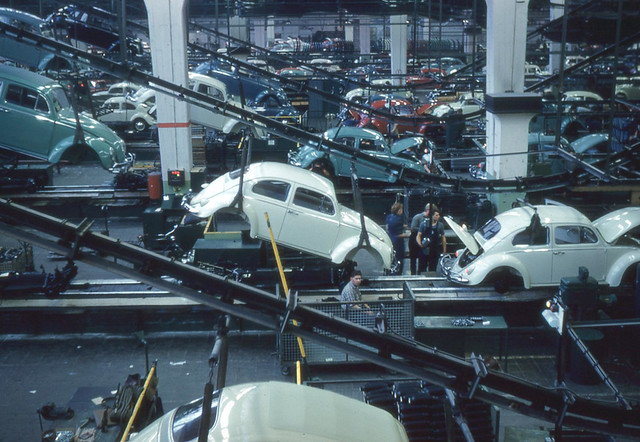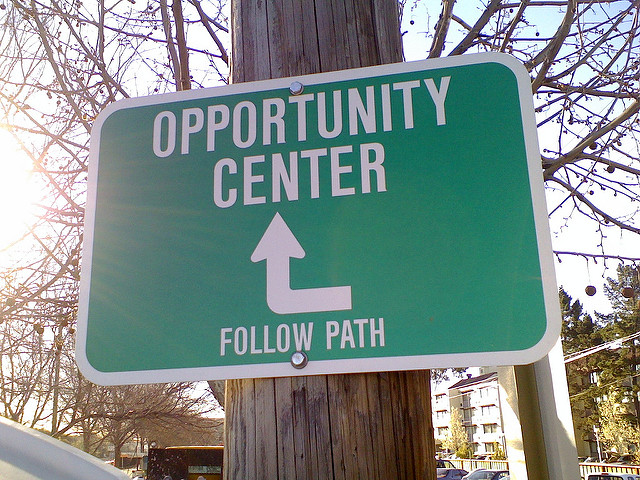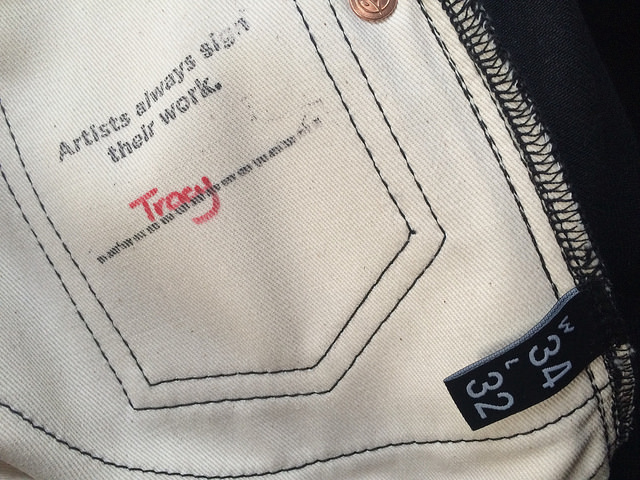Unlock the Magic in Your Story Now
Get the Free 20 questions to Ask Before Launching Your Idea workbook when you sign up for occasional updates.
Get the Free 20 questions to Ask Before Launching Your Idea workbook when you sign up for occasional updates.
Articles filed in: Success
Better Work Happens By Design
filed in Success

My parents both left school in their early teens. They and most of their peers were manual labourers, who didn’t get to choose the kind of work they did. They worked in factories or on building sites for most of their lives. Work for them was a means to an end—a way to contribute to providing for their families.
Today, most of us are luckier than we realise. Even if we’re not in our ideal job, we often have the flexibility to be creative, choose our customers or design our day. And yet we rarely do it with intention. We don’t take the time to question what we want. Answering the following questions might help you to change that.
Better Work Questions
1. What brings you joy?
2. What does a good day look like?
3. Who is your best work for?
4. Who is your best work not for?
5. What opportunities are you grateful for?
6. What kind of projects will you always say yes to?
7. What kind of projects will you always say no to?
We do more of the work we’re proud of by understanding why it matters, both to us and the people we serve.
*For stories of people doing their best work, and some compelling storytelling check out the Netflix Street Food series.
Image by Krista
Try Anyway

Texas head teacher, Belinda George, doesn’t have access to more resources than her colleagues. So how does she change her students’ lives for the better? Instead of focusing on the things she and her team can’t control, like educational policy and budgets, she concentrates on the things she can influence.
Ms George is then free to show up as herself, own her story and ask; what can I do to make things better? Her goal is to bridge the gap between school and home, deepening the school’s relationships with the children and their families.
The result is ‘Tucked-in Tuesdays’—a weekly bedtime story reading broadcast to her ‘scholars’ via Facebook live. Belinda George didn’t wait for the data to tell her what she already knew in her heart was the right thing to do.
Too often we get caught up looking for certainty about a likely outcome before being willing to try. Many breakthrough innovations and life-changing initiatives were brought about by people who didn’t know for sure, but who tried anyway.
Go ahead, try anyway. What have you got to lose? Or even better, what does the world stand to gain because you did?
Image by Austin Public Library
Efficiency Vs. Meaning

Mike’s been driving for Uber for three years. In that time he’s done 20,000 trips while maintaining a consistent 4.94-star rating. Mike works when he wants to. He’s earning more than enough money to pay the bills, and yet he can’t help feeling there’s something missing.
Mike is a phenomenally successful Uber driver by any measure, and yet he doesn’t feel successful. Despite his best efforts and his stellar record Uber doesn’t differentiate him from any other driver. And he knows most of his passengers don’t either.
In the industrial age, factory owners prioritised efficiency above meaning. In our technological age, some still do. But as workers, we do the reverse. We don’t want to be anonymous robots.
When we’re no longer part of the assembly line, we are responsible for our effort, and how much to care, or not to care. The fruit of our labour becomes about more than the exchange of time for money. Work is no longer transactional. For people like you, me and Mike, that means choosing to do the work that gives us that meaning, for the people who find it meaningful.
Image by Roger W
Prices Are Stories

The difference between an $800 pair of Jimmy Choo sandals and those you can buy in Target for $20, isn’t only the quality of the materials. The prices we pay or charge are not just stories about value. They are stories about intentions and expectations—not just on the part of the customer, but also on the vendor.
Customers make assumptions about what they’re buying based on what they pay, and sellers make assumptions about the kind of customers they will attract with a particular pricing strategy. But price alone is a crude way to sort your right customers from your wrong customers.
Just because someone has the money to pay what you’re charging, doesn’t mean they’re your ideal customer. If you get to choose what you work on or make, you also get to decide who to serve.
What are your criteria for choosing the customers and clients who allow you to do your best work, and make it joyful into the bargain?
Image by Steven Guzzardi
Build A Trust Engine
filed in Marketing, Strategy, Success

In the golden age of the advertising businesses of all sizes relied on ads to promote and sell their products. Giant corporations reached us via TV and whole page newspaper ads. Small businesses got our attention by placing small ads in the local newspaper. In the past advertising allowed average products to gain traction. Now we block and ignore.
When conventional advertising became less effective, many businesses migrated to social media platforms. The promise was that targeted promotion would enable us to reach more customers for close to free. While it’s easier to target and reach prospective customers, there is no guarantee that more people will be won over. That doesn’t stop us spending the majority of our resources trying to reach potential customers, and relatively few to convert or retain them. According to Econsultancy, for every $92 we allocate to creating awareness, we spend $1 on converting the customer.
How could we invest our resources wisely?
As is often the case the clues lie in understanding what’s unchanging about people. We still buy things the people we trust are buying. We eat in the places our friends tell us serve good food. We know where to get the best coffee because our neighbours tell us. We do things we see others doing. We always have done. We always will do.
Lasting success isn’t built around launching one PR campaign after another. It’s powered by trust. Whenever you see a business that’s endured look for the trust engine that’s driving its success.
How To Build A Trust Engine
1. Care more than the competition.
2. Make the best product.
3. Give your customers a story to tell.
4. Make it easy for them to tell that story.
In the quest to do work we’re proud of trust trumps awareness every time.
Image by Spyros Papaspyropoulos
The Opportunity Cost Of Pursuing New Opportunities

Time. We can sell it. We can buy it. But we can’t get it back. And yet when it comes to resourcing opportunities, we sometimes believe we can have it all. All we need is to be disciplined about how we spend our time. When we choose to pursue a new project or goal we’re investing more than time—we’re also devoting energy to that new opportunity. And the energy required to do work we’re proud of is as finite as time.
Questions for you
If you decide to do this what are you deciding not to do?
How well can you keep doing this if you start that?
What additional resources will you need?
Which of these projects is getting you closer to your goals?
It’s not an opportunity if it isn’t helping you to get to where you want to go.
Image by Jason Tester
The Power Of Assumptions

It was standing room only on the 109 tram, as it always is at five o’ clock on a Monday evening.
As more passengers boarded the crowded carriage, a man holding a briefcase got up from his seat to let the woman standing in the aisle next to him sit down. She declined. He persisted. She flatly refused. He insisted. There was a standoff. The man didn’t want to lose face. The woman didn’t want to appear weak.
The man assumed he was doing the right thing. And in ninety-nine out of a hundred situations, he was—just not this time for this woman. Once he committed to a course of action it was difficult for him to change tack. It’s never as easy to back down in the moment as we think it will be.
Our assumptions drive many of our business decisions. Those beliefs shape our business development, influencing strategy and tactics. It’s wise to check if those assumptions align with our customers’ desires before we commit to acting on them.
Image by Mr. Benben
Proud Work

When I was growing up, work was a means to an end for many of the breadwinners in our neighbourhood. Work meant food in the bellies and clothes on the backs of the people you loved. There is both dignity and joy in providing, especially when you’ve gone hungry and shoeless, as my father often did when he was a child. I still remember how proud my dad was when he could afford to pay for me to be fitted with a pair of Clark’s black patent leather shoes.
Today, many of us aspire to do more than only provide. We want to do meaningful work. We want the hours we devote to working to stand for something—to be more than an exchange of time for money. If we are driven to find meaning in our work, then we must be clear about not just what we want to do, but who we want to serve and how we want to go about doing it.
Once money is no longer our only driver, we need to discern what enables us to do our best work, and then to detail what those projects or clients we want to work on and with look like. There is no single right formula—no one-size-fits-all answer. There is only your answer.
I have worked in places where the waitress loved her job more than the CEO loved his. And, where the nursing assistant—the least qualified person on the team, made as much impact on patients as the entire medical and nursing staff put together.
Now more than ever we are responsible for the kind of work we do. And more of us are charged with creating the places and circumstances that enable other people to do work they’re proud of.
As Lewis Caroll said; ‘If you don’t know where you are going any road will get you there.’ Once you do know where you want to go, and why, you can proudly choose the path that’s right for you. When you do the right things the way you want to do them, you’ll be surprised how loud your whispers become.
Image by Russell Davies
What’s On Your ‘Not To Do’ List?

Back in 2007, the New York Times called Apple’s decision not to add a mechanical keyboard to the iPhone their billion dollar gamble). That decision worked out pretty well for Apple.
Some of the most successful ideas in the world were born from a conviction about the things the creator, founder or company would not do.
Pixar decided not to make animated musicals.
James Dyson decided not to make vacuum cleaners with bags in them.
Nino and Sisto decided not to expand beyond their single successful café.
What are you gladly forsaking to become the best at what you do?
Image by K.H. Reichert
Easy Does It
filed in Marketing, Strategy, Success

Our expectations about the quality of products have increased exponentially with our ability to perfect the things we produce. When quality improves our tolerance for mistakes plummets. Interestingly, the same isn’t true for human interactions. Even though digital technology has enabled degrees of efficiency beyond our wildest dreams our expectations about how people will use it to serve and connect with us have dropped. Product reliability is a given. Great service and emotional intelligence are not.
Now when you respond to an email in good time or simply reply at all, people are blown away. When you take the time to listen to a complaint and acknowledge someone’s feelings, they are not just satisfied, they are delighted. When you go the slightest bit out of your way to resolve someone’s problem, you make a customer for life.
We spend much of our time working on perfecting the hard thing and not enough time doing the easy thing. People want to be seen and heard just as much, if not more, as they want things to work. Helping is both priceless and underrated.
Image by Jessica Lucia